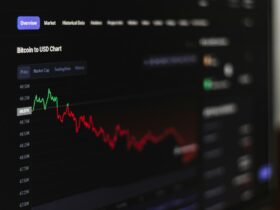High-frequency trading (HFT) has become increasingly popular in the world of cryptocurrency. This article aims to provide a step-by-step analysis of the risks and rewards associated with high-frequency crypto trading.
Understanding High-Frequency Trading
High-frequency trading involves executing a large number of trades in a short period, often leveraging advanced algorithms and powerful computing systems. HFT traders aim to capitalize on small price fluctuations and exploit market inefficiencies to generate profits.
Advantages of High-Frequency Trading
One of the main advantages of high-frequency trading is its potential for generating significant profits. By executing a large volume of trades, HFT traders can take advantage of even the smallest price differentials. Additionally, high-frequency trading can provide liquidity to the market and contribute to more efficient price discovery.
Speed and Technology
High-frequency trading relies heavily on speed and advanced technology. Traders invest in ultra-fast computer systems and low-latency connections to ensure they can execute trades in milliseconds. The ability to react swiftly to market movements is crucial for success in high-frequency trading.
Risks of High-Frequency Trading
While high-frequency trading offers potential rewards, it also comes with significant risks. One of the primary risks is the substantial investment required in technology and infrastructure. Setting up and maintaining a high-frequency trading operation can be expensive, and there is no guarantee of profitability.
Volatility and Market Risks
Crypto markets are known for their volatility, and high-frequency traders are exposed to the inherent risks associated with sudden price swings. Rapid market movements can result in significant losses if trades are not executed quickly enough or if algorithms fail to respond effectively.
Regulatory and Legal Risks
High-frequency trading has attracted increased regulatory scrutiny in recent years. Regulatory changes or restrictions on HFT practices can impact the profitability and viability of high-frequency trading strategies. Traders must stay informed about regulatory developments and ensure compliance with relevant laws and regulations.
Monitoring and Risk Management
Effective risk management is crucial for high-frequency traders. They need to implement robust monitoring systems to track trades, identify anomalies, and manage potential risks. Risk management practices should include setting stop-loss orders, implementing circuit breakers, and continuously monitoring positions and exposure.
Constant Adaptation and Strategy Development
To succeed in high-frequency trading, traders must continuously adapt their strategies to changing market conditions. They need to analyze data, monitor market trends, and refine their algorithms to stay ahead of the competition. Flexibility and the ability to react swiftly to new opportunities are key to success in this fast-paced environment.
Conclusion
High-frequency crypto trading offers the potential for substantial profits but comes with inherent risks. Traders need to carefully consider the advantages and disadvantages before engaging in this type of trading. Successful high-frequency trading requires a deep understanding of market dynamics, advanced technology, and robust risk management practices. By staying informed, adapting strategies, and carefully managing risks, traders can navigate the challenges and potentially reap the rewards of high-frequency crypto trading.
















Leave a Reply